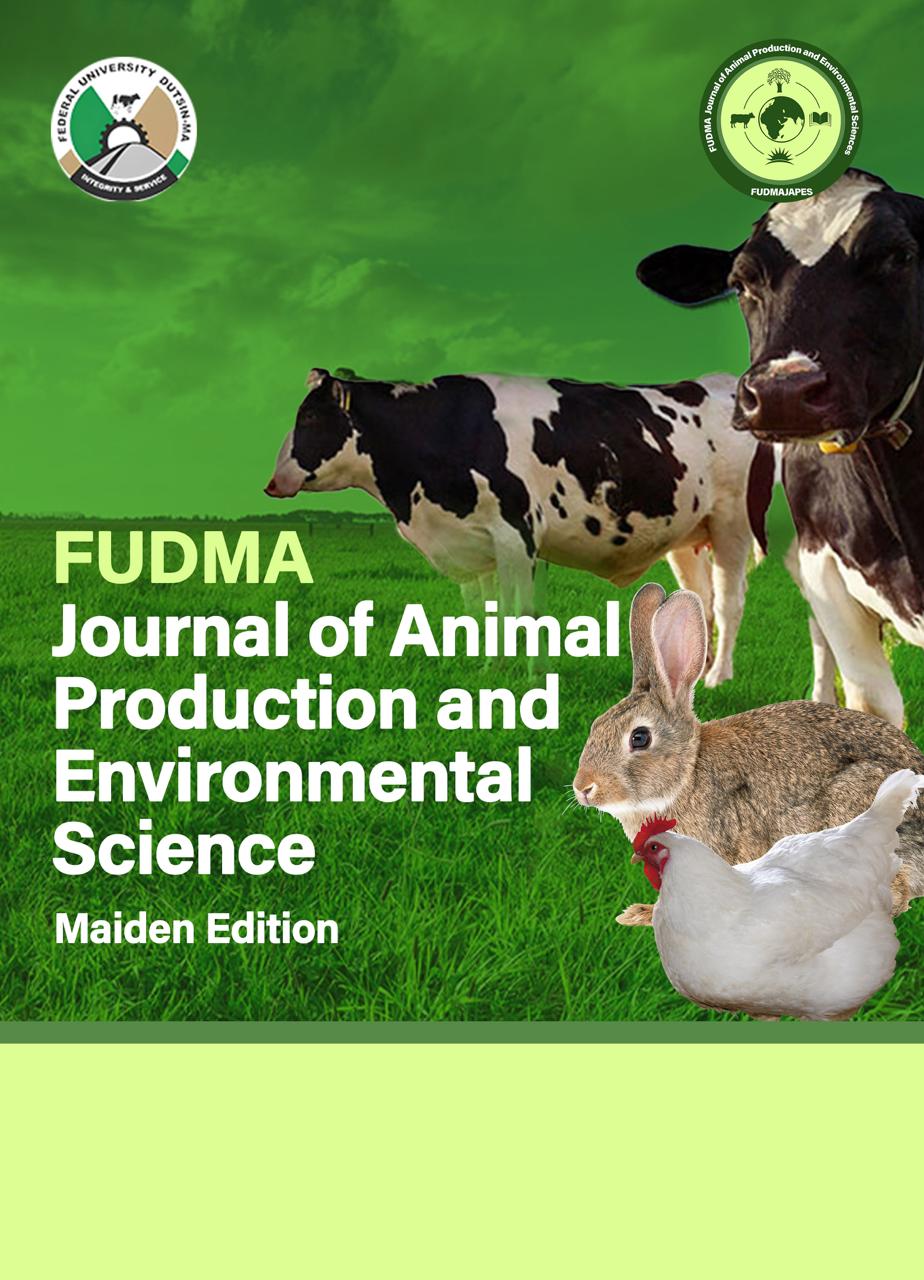IMPACT OF LIVELIHOOD ACTIVITIES ON THE CONSERVATION OF IPINU-IGEDE COMMUNITY FOREST RESERVE, OJU LOCAL GOVERNMENT AREA, BENUE STATE, NIGERIA
DOI:
https://doi.org/10.33003/japes.2025.v1i1.9-21Keywords:
Impact, Livelihood, Conservation, Ipinu-IgedeAbstract
ABSTRACT
A Survey on the impact of livelihood activities on conservation of Ipinu-igede community forest reserve, Oju Local Government Area, Benue State, Nigeria was carried out to determine the socio-demographic characteristics and effects of livelihood activities of the study area. Data was collected using purposive and random sampling methods, with 388 semi-structured questionnaires distributed to respondents. Descriptive statistics were used to analyze socio-economic data, while a five-point Likert scale assessed the impact of livelihood activities on the forest reserve and the contribution of forest resources to local livelihoods. Results showed that 33.4% of respondents were men, while 66.6% were women, indicating higher female participation in livelihood activities. While 63.2% were aware of the negative consequences of forest resource exploitation, 36.8% were unaware. The results also showed that, based on weighting mean score (WMS), collecting fuelwood (2.20), growing plants for food (2.53), hunting (2.02), and fodder (2.05) were rated lower, while gathering timber (3.82) and cultivating crops (3.29) were rated higher. Additionally, the results showed that, respondents' livelihood activities were significantly influenced by fuelwood (3.81) timber (3.31), medicinal plants (3.56), charcoal production (3.95), game hunting (4.28), cultivation of more crops (4.13) plant food (4.29), and wood products (3.13). The study concluded that while local livelihoods are closely tied to forest resources, these activities often harm forest conservation efforts. The study recommends that enhancing conservation education, implementing sustainable harvesting practices, promoting community-based management, improving revenue streams, strengthening monitoring, and supporting legislation to balance resource use and forest conservation.






